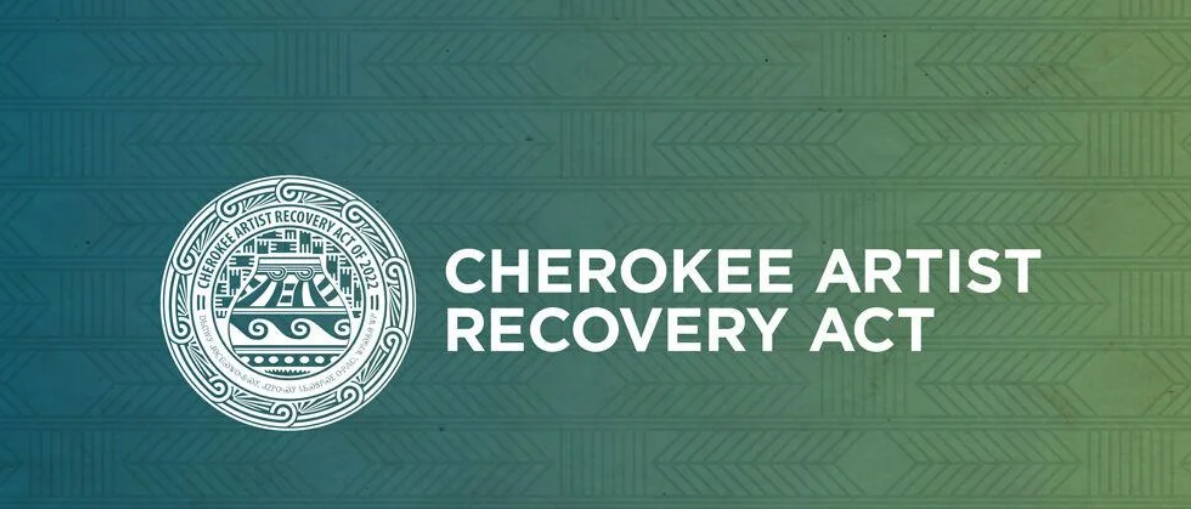
- Details
- By Chuck Hoskin Jr
Guest Opinion. Cherokee artists share the Cherokee story and culture with the world. They are essential to our identity as a people. Sadly, the pandemic led to many canceled art shows and festivals and temporarily closed galleries. It hurt so many of our artists financially. We treasure Cherokee artists, but they have struggled in this hard time.
That’s why Deputy Chief Bryan Warner and I were honored to develop and propose the Cherokee Artist Recovery Act (ARA). This landmark legislation makes an unprecedented investment of $3 million in the Cherokee artist community. It offers hope and support for our artisans, helping them recover and make up for lost sales.
By supporting artists, this act is an investment in the preservation and promotion of Cherokee culture. ARA includes the acquisition of $1.5 million worth of original artwork from Cherokee artists through a public bid process over the next two years. This not only provides artists with immediate financial relief but also showcases their incredible talent.
Additionally, the act funds programs such as cultural classes, market access support, marketing assistance, facility enhancements and the development of the Cherokee Artist Resource Collection. These efforts ensure that our artists have support to continue creating and promoting their art. Whether it's employing artists to teach classes, hosting art shows or helping with marketing, more than ever we are committed to empowering our artists to succeed.
The Cherokee ARA draws its inspiration from the historic Works Progress Administration Federal Art Project, which supported artists during the Great Depression. Just as that program maintained the arts community during a trying chapter of history, the ARA will be a catalyst for the current generation of Cherokee artists.
We understand the transformative power art can have for whole families and communities. Whether artists carry on the traditions of ancient Cherokee crafts, or they translate Cherokee stories and values into new artistic mediums, they bring to vivid life what it means to be Cherokee.

The pandemic was a hard time for all of us, but by coming together in response, we emerge from it stronger than ever. I encourage all Cherokee artists to take advantage of the opportunities provided by the ARA. Visit https://anadisgoi.com/index.php/artist-recovery-act to access additional information and application forms.
Cherokee artists are pillars of local communities and cultural ambassadors to the world. We support them as a nation so that Cherokee art will continue to inspire for generations to come.
Chuck Hoskin, Jr. is the principal chief of the Cherokee Nation.
More Stories Like This
Governor Stitt, it’s raining. Save SNAP.Remembering My Grandma During Native American Heritage Month
HHS Secretary Kennedy to Indian Country: Even During a Shutdown, Your Health Care is My Priority
Finding the Good News: MacKenzie Scott’s Quiet Commitment Amidst the Noise
Martial Law in an American City —1929
Help us tell the stories that could save Native languages and food traditions
At a critical moment for Indian Country, Native News Online is embarking on our most ambitious reporting project yet: "Cultivating Culture," a three-year investigation into two forces shaping Native community survival—food sovereignty and language revitalization.
The devastating impact of COVID-19 accelerated the loss of Native elders and with them, irreplaceable cultural knowledge. Yet across tribal communities, innovative leaders are fighting back, reclaiming traditional food systems and breathing new life into Native languages. These aren't just cultural preservation efforts—they're powerful pathways to community health, healing, and resilience.
Our dedicated reporting team will spend three years documenting these stories through on-the-ground reporting in 18 tribal communities, producing over 200 in-depth stories, 18 podcast episodes, and multimedia content that amplifies Indigenous voices. We'll show policymakers, funders, and allies how cultural restoration directly impacts physical and mental wellness while celebrating successful models of sovereignty and self-determination.
This isn't corporate media parachuting into Indian Country for a quick story. This is sustained, relationship-based journalism by Native reporters who understand these communities. It's "Warrior Journalism"—fearless reporting that serves the 5.5 million readers who depend on us for news that mainstream media often ignores.
We need your help right now. While we've secured partial funding, we're still $450,000 short of our three-year budget. Our immediate goal is $25,000 this month to keep this critical work moving forward—funding reporter salaries, travel to remote communities, photography, and the deep reporting these stories deserve.
Every dollar directly supports Indigenous journalists telling Indigenous stories. Whether it's $5 or $50, your contribution ensures these vital narratives of resilience, innovation, and hope don't disappear into silence.
 The stakes couldn't be higher. Native languages are being lost at an alarming rate. Food insecurity plagues many tribal communities. But solutions are emerging, and these stories need to be told.
The stakes couldn't be higher. Native languages are being lost at an alarming rate. Food insecurity plagues many tribal communities. But solutions are emerging, and these stories need to be told.
Support independent Native journalism. Fund the stories that matter.
Levi Rickert (Potawatomi), Editor & Publisher
